Home>Articles>What Happens If You Plant Bananas In Your Garden
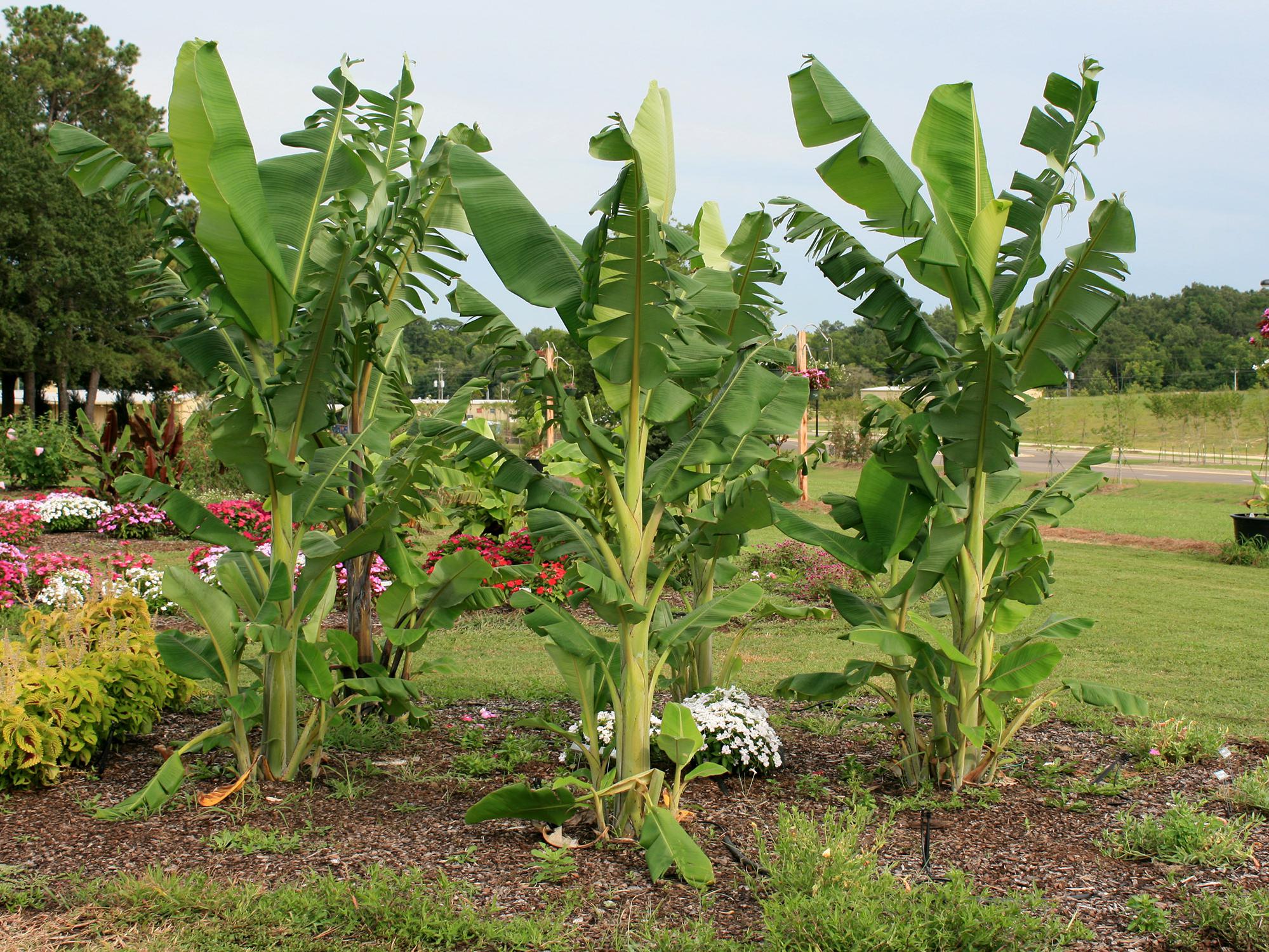

Articles
What Happens If You Plant Bananas In Your Garden
Modified: September 2, 2024
Discover the fascinating results of planting bananas in your garden with this comprehensive guide on gardening. Find out the benefits, challenges, and tips for successful banana cultivation.
(Many of the links in this article redirect to a specific reviewed product. Your purchase of these products through affiliate links helps to generate commission for Storables.com, at no extra cost. Learn more)
Introduction
Welcome to the world of gardening! If you’re an avid gardener or just starting out, you may be wondering what types of plants you can grow in your garden to add beauty, diversity, and maybe even some tasty treats. One plant that you may not typically associate with gardening is bananas. Yes, you read that right, bananas can indeed be grown in your garden!
While bananas are traditionally associated with tropical climates, with some careful planning and the right gardening techniques, you can successfully grow them in your own backyard. Not only will you have the satisfaction of harvesting your own homegrown bananas, but you’ll also enjoy the lush foliage and tropical feel they bring to your garden.
In this article, we’ll explore the benefits of planting bananas, provide step-by-step instructions on how to grow them in your garden, and offer tips for caring for and harvesting your banana plants. So, let’s dive in and discover the wonderful world of banana gardening!
Key Takeaways:
- Grow bananas in your garden for fresh, nutrient-dense fruit, lush landscaping, and a unique, cost-effective gardening experience. Overcome challenges with proper care and enjoy the rewards of homegrown bananas!
- Embrace the adventure of banana gardening! From planting to harvesting, bananas offer educational, culinary, and environmental benefits. Navigate challenges and savor the satisfaction of growing your own tropical fruit.
Read more: What Happens If You Plant Hybrid Seeds
Benefits of Planting Bananas
Planting bananas in your garden offers a myriad of benefits beyond just the joy of growing your own fruit. Here are some of the key advantages:
1. Nutritional Value: Bananas are an excellent source of essential vitamins and minerals. They are rich in potassium, which is vital for healthy heart function, and contain significant amounts of vitamin C, dietary fiber, and vitamin B6. Incorporating homegrown bananas into your diet can provide you with fresh, nutrient-dense fruit.
2. Landscaping Appeal: Bananas can make a stunning addition to your garden’s landscape. With their large, vibrant green leaves, banana plants create a tropical and lush atmosphere. They can serve as a focal point or add height and drama when paired with other plants. Bananas also offer natural shade, which can be advantageous for creating a cool and comfortable outdoor space.
3. Environmental Benefits: As plants, bananas play a crucial role in promoting a healthy ecosystem. They contribute to reducing carbon dioxide levels by absorbing it during photosynthesis. Additionally, banana plants help improve air quality by releasing oxygen. By incorporating bananas into your garden, you’re not only beautifying your space but also contributing to a greener planet.
4. Cost-Effective: Buying bananas from the grocery store can add up over time. By growing your own, you can save money and enjoy an endless supply of fresh fruit. Once established, banana plants are relatively low-maintenance, making them a cost-effective investment for any gardener.
5. Educational Experience: Growing bananas offers a unique opportunity for education, particularly for children. Watching the growth process from planting a tiny seed or pup to harvesting a bunch of ripe bananas can be a fascinating and educational experience. It teaches children about the life cycle of plants, the importance of patience and nurturing, and the satisfaction of reaping the rewards of their efforts.
6. Culinary Versatility: Bananas are not just a nutritious snack; they’re also incredibly versatile in the kitchen. Whether you enjoy them fresh, freeze them for smoothies, bake them into delicious bread, or use them in savory dishes, having your own supply of bananas opens up a world of culinary possibilities.
7. Unique Garden Experience: Adding bananas to your garden offers a unique and exotic touch. It brings a sense of adventure and excitement to your gardening journey. The satisfaction of successfully growing a tropical fruit in a non-tropical environment is a rewarding experience that sets your garden apart.
With all these benefits in mind, it’s time to learn how to prepare your soil and choose the right banana variety for your garden. Let’s dig deeper!
Soil Preparation for Banana Planting
Proper soil preparation is essential for the successful growth of banana plants. Here are the steps to ensure your soil is ready for planting:
- Select a Well-Draining Location: Bananas prefer well-draining soil to prevent waterlogging and root rot. Choose a spot in your garden that receives full sun or partial shade, as bananas thrive in tropical-like conditions.
- Improve Soil Drainage: If your soil is heavy or has poor drainage, you can improve it by adding organic matter such as compost or well-rotted manure. This will help to loosen the soil and enhance drainage. Spread a layer of organic matter over the planting area and mix it into the top few inches of soil.
- Test Soil pH: Bananas prefer slightly acidic to neutral soil with a pH range of 6.0 to 7.0. Conduct a soil test to determine the pH level of your soil. You can purchase a soil testing kit or send a sample to your local agricultural extension service for analysis. If the pH is too low (acidic), you can add lime to raise it. If the pH is too high (alkaline), you can amend the soil with sulfur or peat moss to lower it.
- Loosen the Soil: Use a garden fork or tiller to loosen the soil in the planting area. This will create a loose and aerated environment for the banana plant’s roots to establish and grow.
- Remove Weeds and Debris: Clear the planting area of any weeds, rocks, or debris that may hinder the growth of your banana plants. Weeds can compete with the bananas for nutrients and water, so it’s important to remove them before planting.
- Organic Fertilizer: Before planting, it’s a good idea to incorporate a slow-release organic fertilizer into the soil. This will provide the necessary nutrients for the banana plants as they grow. Follow the manufacturer’s instructions regarding the application rate.
By following these soil preparation steps, you’ll create an optimal environment for your banana plants to thrive. Now that your soil is ready, it’s time to choose the right banana variety that suits your garden’s climate and your taste preferences. Let’s explore your options!
Choosing the Right Banana Variety
When it comes to choosing the right banana variety for your garden, there are several factors to consider, including your climate, available space, and personal preferences. Here are some popular banana varieties to consider:
- Cavendish: The Cavendish banana is the most commonly grown variety worldwide. It produces medium-sized, sweet bananas with a creamy texture. This variety is known for its resistance to diseases, making it a good choice for beginner gardeners.
- Dwarf Cavendish: If you have limited space in your garden, consider the Dwarf Cavendish variety. It is a smaller version of the regular Cavendish banana and grows well in containers or small garden beds. Despite its smaller size, it still produces full-sized bananas.
- Gros Michel: The Gros Michel is a popular heirloom variety known for its superior flavor and fragrance. However, it is more susceptible to diseases, making it a bit more challenging to grow. If you’re up for the challenge, the Gros Michel can reward you with delicious, flavorful bananas.
- Red Banana: If you’re looking for a visually striking banana variety, consider the Red Banana. As the name suggests, it has a vibrant red skin and a slightly sweeter taste compared to traditional yellow bananas. The Red Banana variety adds a pop of color to your garden and can be a delightful addition to fruit salads or desserts.
- Plantain: Plantains are a staple food in many tropical regions. They are larger and starchier than regular bananas and are typically used in cooking. If you enjoy using plantains in your culinary creations, consider growing a Plantain variety in your garden.
When selecting a banana variety, it’s important to consider your climate and the specific requirements of each variety. Some bananas are more cold-tolerant, while others require a warmer climate. Research the specific growing conditions and temperature preferences of the varieties you’re interested in, and choose one that is well-suited to your garden’s climate.
Additionally, consider the space you have available. Some banana varieties can grow quite tall, reaching up to 10-15 feet in height. If you have limited vertical space, choose a dwarf or small-sized variety that fits your garden’s dimensions.
Lastly, consider your personal preferences. Different banana varieties have distinct flavors, textures, and uses. If you have a specific taste preference or plan to use the bananas in specific culinary applications, choose a variety that aligns with your preferences.
Now that you’ve chosen the right banana variety for your garden, it’s time to learn how to properly plant and care for your banana plants. Let’s delve into the next steps of banana gardening!
Planting Bananas in Your Garden
Now that you’ve chosen the right banana variety, it’s time to get your hands dirty and plant those banana trees in your garden. Follow these steps for successful banana planting:
- Prepare the Planting Hole: Dig a hole that is twice as wide and deep as the root ball of the banana plant. This will provide enough space for the roots to spread out comfortably. Loosen the soil at the bottom of the hole to aid in drainage.
- Position the Banana Plant: Place the banana plant in the hole, ensuring that it sits at the same depth as it was in the nursery container. The plant’s base should be level with or slightly above the surrounding soil to avoid water pooling around the stem.
- Backfill the Hole: Gently backfill the hole with soil, pressing it down lightly to remove any air pockets. Avoid compacting the soil too much, as the roots need space to breathe and grow. Water the plant thoroughly after backfilling to settle the soil.
- Add Mulch: Apply a layer of organic mulch, such as wood chips or straw, around the base of the banana plant. This will help retain moisture in the soil and suppress weed growth. Leave a gap around the stem to prevent rotting.
- Stake the Plant: If your banana plant is tall or prone to toppling over, provide support by staking it. Drive a sturdy stake into the ground beside the plant, being careful not to damage the roots, and tie the trunk to the stake using a soft tie or twine. This will keep the plant upright and stable.
- Watering: Sufficient watering is crucial for the healthy growth of banana plants. Keep the soil consistently moist, but not waterlogged. Aim to provide around 1-2 inches of water per week, adjusting based on rainfall and temperature. Mulching can help retain moisture in the soil.
- Pruning: As your banana plant grows, it will produce multiple shoots or suckers around the base. To allow the main stem to grow stronger and focus its energy, it’s recommended to remove all but one or two of the strongest suckers. This will help maximize fruit production.
- Provide Sun Protection: While bananas thrive in sunny conditions, intense heat can scorch the leaves. If you live in a hot climate, provide partial shade to protect your plants during the hottest part of the day. This can be done by using shade cloths or strategically positioning taller plants to provide shade.
By following these steps, you’ll ensure that your banana plants are properly planted and set up for success in your garden. But that’s just the beginning – there’s more to learn about watering, fertilizing, and protecting your banana plants. Let’s delve deeper into caring for your banana plants.
Planting bananas in your garden requires a warm, tropical climate with well-drained soil. Choose a sunny spot and provide regular watering and fertilization for optimal growth. Keep in mind that bananas need plenty of space to spread out, so plan accordingly.
Watering and Fertilizing Banana Plants
Proper watering and fertilization are essential for nurturing healthy and productive banana plants. Here’s a guide to help you understand the watering and fertilizing needs of your banana plants:
Watering:
Consistent and adequate moisture is crucial for the optimal growth of banana plants. Here are some watering tips to keep in mind:
- Regular Watering: Banana plants require regular watering to maintain moisture in the soil. Aim to keep the soil evenly moist, but not waterlogged, throughout the growing season.
- Deep Watering: When watering, provide enough water to penetrate the root zone deeply. This encourages the roots to grow deeply and promotes a strong, healthy plant. Water should reach a depth of at least 8 to 12 inches.
- Frequency of Watering: The frequency of watering will depend on various factors such as climate, temperature, and soil moisture retention. As a general guideline, water your banana plants 2 to 3 times per week, adjusting based on rainfall and temperature fluctuations.
- Avoid Waterlogged Soil: While bananas need consistent moisture, excessive waterlogging can lead to root rot and other diseases. Ensure proper soil drainage and make sure the soil is not saturated for extended periods.
- Mulching: Apply a layer of organic mulch around the base of the plants to help retain moisture in the soil. Mulching also helps suppress weed growth, which can compete with banana plants for water and nutrients.
Fertilizing:
Providing proper nutrients is essential for the healthy growth and fruit production of banana plants. Here are some tips for fertilizing your banana plants:
- Slow-Release Fertilizer: Use a slow-release or organic fertilizer specifically formulated for fruiting plants. Choose a fertilizer with a balanced ratio of nutrients, such as 10-10-10 or 14-14-14, which provides a good mix of nitrogen (N), phosphorus (P), and potassium (K).
- Initial Fertilization: Apply a generous amount of fertilizer when planting your banana plants. This will help provide a nutrient boost while the plants establish their root systems. Mix the fertilizer into the soil around the base of the plants, following the package instructions for proper application rates.
- Regular Feeding: Once established, banana plants benefit from regular feeding. Apply a balanced fertilizer every 4 to 6 weeks during the growing season. Follow the package instructions for the appropriate application rates, as over-fertilization can be harmful to the plants.
- Foliar Feeding: In addition to soil fertilization, you can also supplement with foliar feeding. Spray a soluble fertilizer directly onto the leaves, ensuring thorough coverage. This can provide a quick nutrient boost and help address any nutrient deficiencies.
- Organic Amendments: Incorporate organic matter, such as compost or aged manure, into the soil around the base of the plants annually. This helps improve soil fertility and provides a slow-release source of nutrients.
Remember to always follow the manufacturer’s instructions for fertilizers and adjust the feeding schedule based on the specific needs of your banana plants. By providing adequate and balanced water and nutrients, you’ll promote healthy growth, strong root development, and bountiful banana harvests.
Next, let’s explore how to protect your banana plants from potential pests and diseases to ensure their long-term health.
Protecting Banana Plants from Pests and Diseases
Just like any other plant, banana plants are susceptible to various pests and diseases. Taking preventive measures and promptly addressing any issues will help protect your banana plants and ensure their continued health. Here’s how you can prevent and manage common pests and diseases:
Pests:
- Aphids: These tiny insects can infest banana plants and cause damage by sucking sap from the leaves. Regularly inspect your plants for signs of aphids, such as curled or distorted leaves. Use a strong jet of water or insecticidal soap to control small infestations. Consider using natural predators like ladybugs to keep aphid populations in check.
- Banana Weevils: These pests attack the roots and can cause significant damage to banana plants. Remove and destroy any affected plants immediately. Practice good sanitation by removing infected plant debris and avoiding planting bananas in areas where they have been previously affected.
- Mites: Spider mites are common pests that can cause damage to banana leaves. Monitor your plants for yellowing leaves, fine webbing, and stippling. Regularly misting the leaves with water and maintaining proper humidity levels can help deter spider mite infestations.
- Thrips: Thrips are small insects that feed on banana leaves, causing silvering or bronzing of the foliage. Regularly inspect your plants and use sticky traps to monitor thrip populations. Insecticidal soap or neem oil can be used to control thrip infestations.
- Fruit Flies: Fruit flies can be a nuisance to banana plants, particularly when the fruit starts to ripen. Use yellow sticky traps to capture adult fruit flies and remove any overripe or damaged fruit from the vicinity of the plant.
Diseases:
- Panama Disease: This soil-borne fungus can cause devastating effects on banana plants. Prevention is key, as there is no cure once a plant is infected. Avoid planting susceptible banana varieties in areas where Panama disease has been identified. If you suspect an infection, remove and destroy the affected plants, and avoid replanting bananas in the same location.
- Black Sigatoka: This fungal disease affects the leaves of banana plants, causing dark spots and leaf drop. Regularly inspect your plants and remove and destroy any infected leaves. Fungicides labeled for Black Sigatoka can be used as a preventative measure, in accordance with the product instructions.
- Anthracnose: This fungal disease affects the fruit of banana plants, causing dark, sunken lesions. Harvest your bananas promptly and avoid damaging the fruit during handling. Good air circulation and proper spacing between plants can also help prevent anthracnose.
- Bacterial Wilt: This bacterial disease can cause wilting and yellowing of leaves and stunting of the plant. Unfortunately, there is no cure for bacterial wilt, and infected plants should be promptly removed and destroyed to prevent further contamination.
Maintaining good garden hygiene, proper spacing between plants, and regular monitoring can help prevent and manage pest and disease issues. Additionally, selecting disease-resistant banana varieties can provide an added layer of protection against common diseases.
By being vigilant and taking proactive measures, you can protect your banana plants and ensure their long-term health and productivity.
Now that we’ve covered pest and disease management, let’s move on to the exciting part – harvesting and caring for your banana bunches!
Harvesting and Caring for Banana Bunches
Harvesting your homegrown banana bunches is an exciting and rewarding experience. Here are some guidelines to help you properly harvest and care for your bananas:
Harvesting:
- Timing: The timing of banana harvesting is crucial for optimal flavor and ripeness. Bananas should be harvested when they have reached their mature green stage. This is when the fruit is fully formed but still green and firm. Avoid waiting until the fruit turns completely yellow on the plant, as this can result in a loss of flavor and texture.
- Trimming the Bunch: Use a sharp knife or shears to cut the entire banana bunch from the plant. Leave a few inches of the stem attached to the bunch. Avoid damaging the fruit during the cutting process.
- Hang and Ripen: Hang the harvested banana bunch in a well-ventilated area, away from direct sunlight. This allows the bananas to ripen slowly and evenly. Avoid placing them in plastic bags, as this can accelerate ripening and lead to overripe fruit.
Caring for Banana Bunches:
- Temperature and Humidity: Bananas ripen best at temperatures between 60°F and 70°F (15°C and 21°C) with around 90% humidity. Maintain these conditions to promote even ripening and prevent the fruit from drying out.
- Removing Suckers: After harvesting the banana bunch, the main plant will produce new suckers or shoots. Remove all but one or two of the strongest suckers to allow the remaining plants to develop into the next generation of fruit-bearing plants.
- Ripening: Once the bananas are harvested, they will continue to ripen. You can control the ripening process by placing a ripe apple or banana alongside the green bananas. The ethylene gas produced by the ripe fruit will speed up the ripening process of the green bananas.
- Storage: If you have an abundance of ripe bananas, you can store some for later use. Place fully ripe bananas in the refrigerator to slow down the ripening process. The peel may turn brown, but the fruit inside will remain sweet and delicious.
- Using Overripe Bananas: If some of your bananas become overripe, don’t fret! Overripe bananas are perfect for baking delicious banana bread, muffins, or pancakes. You can also freeze peeled and mashed bananas to use in smoothies or as a healthy ice cream alternative.
By following these steps, you’ll be able to enjoy your homegrown bananas at their peak ripeness while maximizing their storage and usage potential.
Now that you know how to harvest and care for your banana bunches, let’s discuss the potential challenges you may encounter when growing bananas in your garden.
Potential Challenges of Growing Bananas in Your Garden
While growing bananas in your garden can be a rewarding experience, there are a few challenges that you may encounter. Being aware of these challenges can help you prepare and overcome them. Here are some potential challenges of growing bananas:
Cold Sensitivity: Bananas are tropical plants and are sensitive to cold temperatures. They thrive in USDA Hardiness Zones 9-11, where temperatures rarely drop below freezing. If you live in a colder climate, growing bananas may require additional protective measures such as wrapping the plants or moving them indoors during winter.
Space Requirement: Banana plants are large and can take up considerable space in your garden. They have long, spreading leaves and can grow 10 to 15 feet tall. Ensure that you have sufficient space to accommodate the plant’s growth and to prevent overcrowding with other plants. Dwarf banana varieties can be suitable for smaller gardens or container growing.
Soil Drainage: Bananas require well-draining soil to prevent waterlogging and root rot. If your garden soil has poor drainage, you may need to amend it with organic matter or consider growing bananas in raised beds or containers with well-draining soil.
Pest and Disease Management: Banana plants can be susceptible to various pests and diseases, such as aphids, banana weevils, thrips, Panama disease, and Black Sigatoka. Regular monitoring, proper sanitation, and applying preventive measures such as natural predators or organic treatments can help manage these challenges.
Sun and Temperature: While bananas need plenty of sunlight to thrive, intense heat can scorch the leaves. Consider providing partial shade during the hottest part of the day, especially in hotter climates. Protection from strong winds is also crucial to prevent damage to the large banana leaves.
Watering and Fertilization: Achieving the correct balance of watering and fertilization can be challenging. Overwatering can lead to root rot, while under-watering can result in stunted growth. Similarly, over-fertilization can burn the plants, while insufficient fertilization can hinder their growth and fruit production. Regular monitoring of soil moisture levels and following proper fertilization guidelines will help maintain a healthy balance.
Ripening Timing: Timing the harvesting and ripening of bananas can be a bit tricky. Harvesting them too early can result in tasteless fruit, while waiting too long might lead to overripe and mushy bananas. Regular monitoring and understanding the typical ripening timeline for your chosen banana variety will help you determine the optimal harvesting time.
Despite these challenges, with proper care, planning, and knowledge, growing bananas in your garden can be a rewarding and successful endeavor. Knowing what to expect and being prepared to address these challenges will increase your chances of growing healthy, fruitful banana plants.
Now that you are aware of the potential challenges, you can confidently embark on your banana gardening journey. Happy growing!
Read more: What Happens If You Leave Glass In Your Foot
Conclusion
Congratulations! You have embarked on an exciting adventure by considering planting bananas in your garden. By now, you should have a good understanding of the benefits of growing bananas, the soil preparation required, selecting the right banana variety, planting techniques, watering and fertilizing practices, pest and disease management, and the process of harvesting and caring for your banana bunches.
Growing bananas in your garden not only provides you with a fresh and nutritious fruit supply but also adds beauty and a touch of tropical ambiance to your outdoor space. The nutritional value, landscaping appeal, cost-effectiveness, and educational opportunities make growing bananas a worthwhile endeavor.
However, like any gardening endeavor, there may be challenges along the way, such as cold sensitivity, space requirements, soil drainage, pest and disease management, sun and temperature considerations, and proper watering and fertilization. But armed with the knowledge and understanding of these challenges, you can confidently navigate your way to successful banana cultivation.
Remember to choose the right banana variety that suits your climate, taste preferences, and available space. Prepare the soil properly, ensuring good drainage and the right pH level. Plant your banana trees, water them consistently, and provide adequate fertilization to promote healthy growth. Protect your plants from pests and diseases through regular monitoring and proactive measures. Harvest your banana bunches at the right time and care for them during the ripening process.
Your journey as a banana gardener will be a learning experience filled with joy, challenges, and rewards. Whether you’re a seasoned gardener or a beginner, growing bananas in your own garden can bring a sense of fulfillment and pride as you witness the growth and eventual harvest of your own homegrown bananas.
So, strap on your gardening gloves, put on your sun hat, and let the journey begin! With dedication, proper care, and a little bit of patience, you’ll be savoring the sweet taste of your homegrown bananas in no time. Happy banana gardening!
Frequently Asked Questions about What Happens If You Plant Bananas In Your Garden
Was this page helpful?
At Storables.com, we guarantee accurate and reliable information. Our content, validated by Expert Board Contributors, is crafted following stringent Editorial Policies. We're committed to providing you with well-researched, expert-backed insights for all your informational needs.
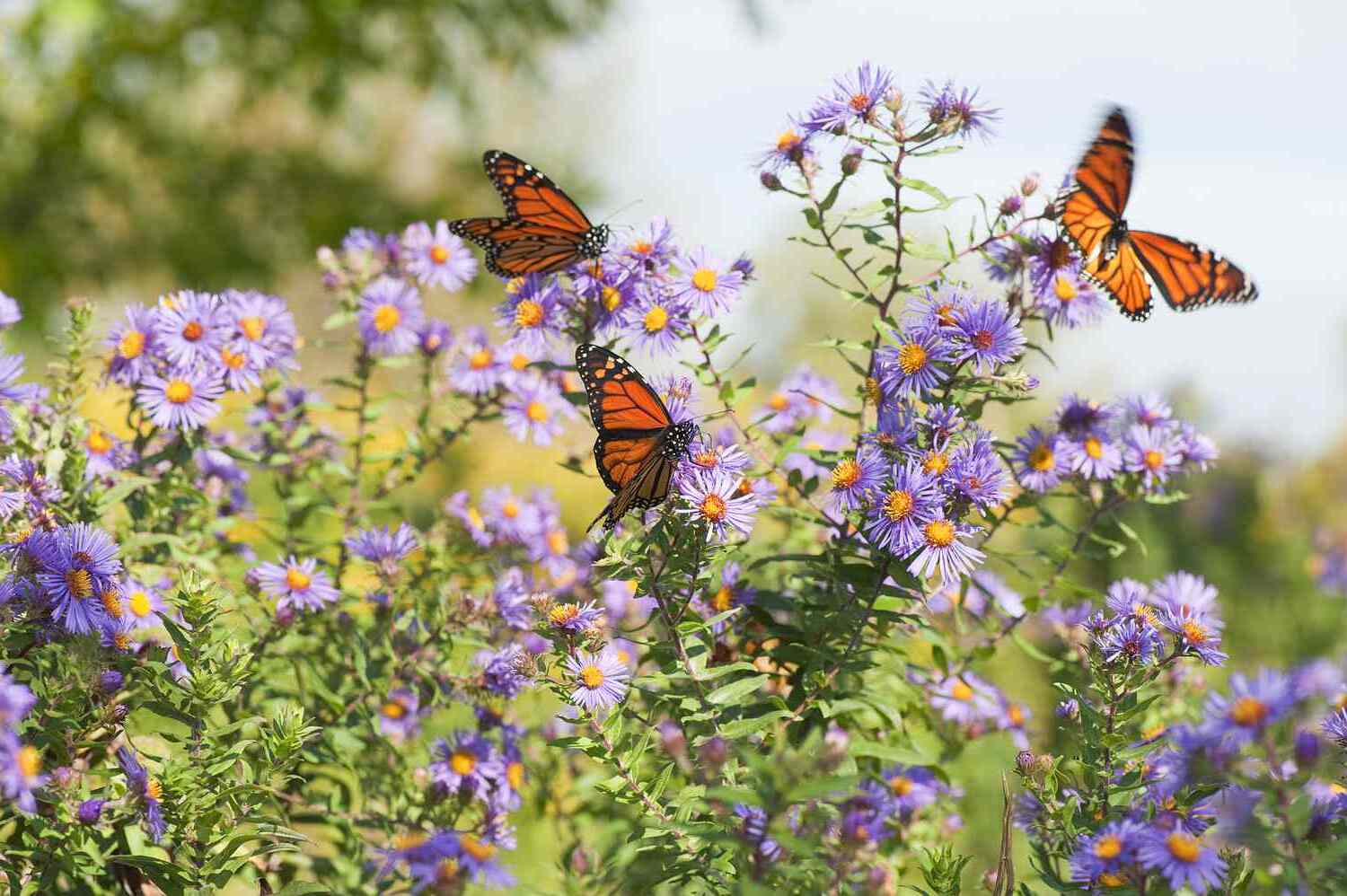
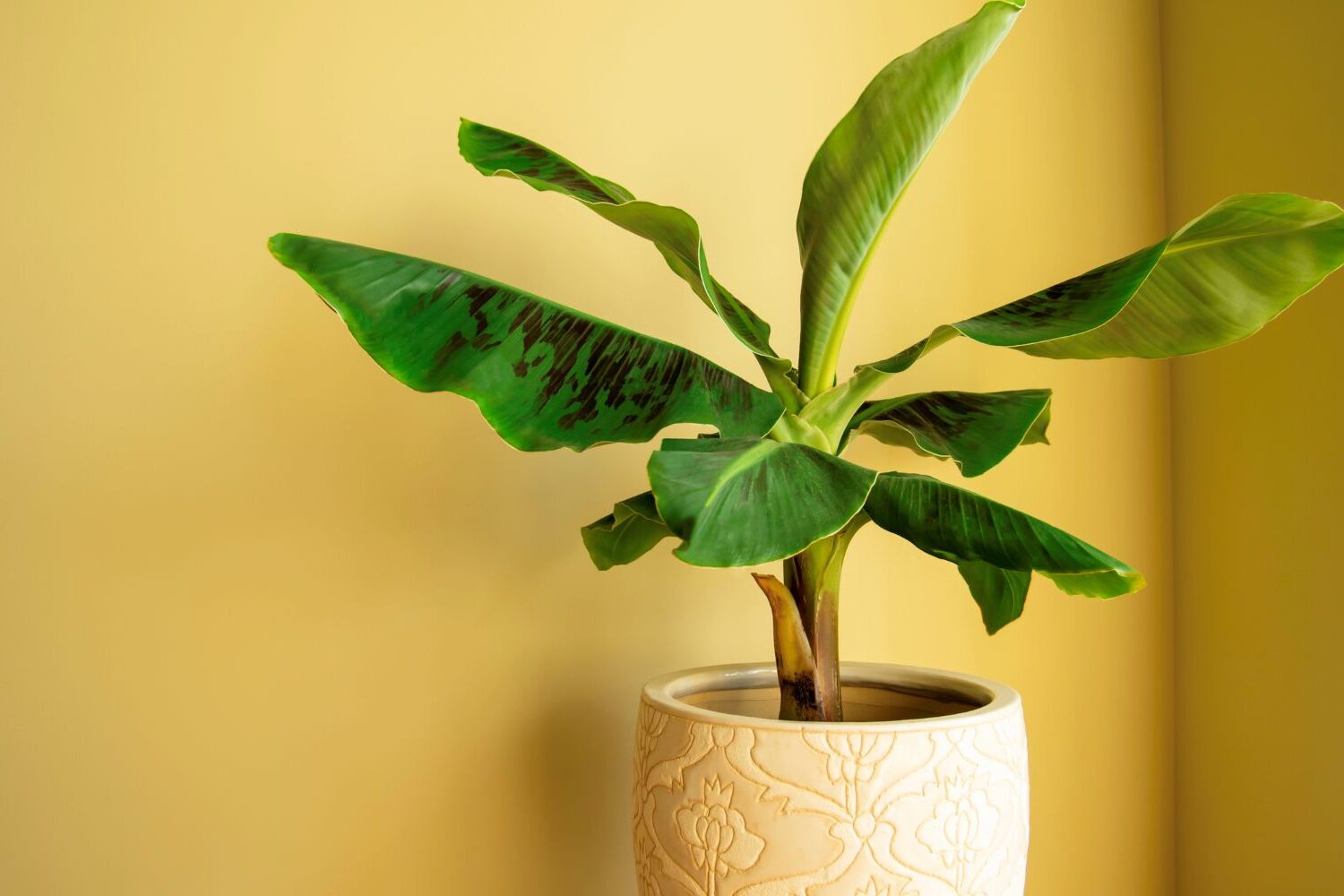
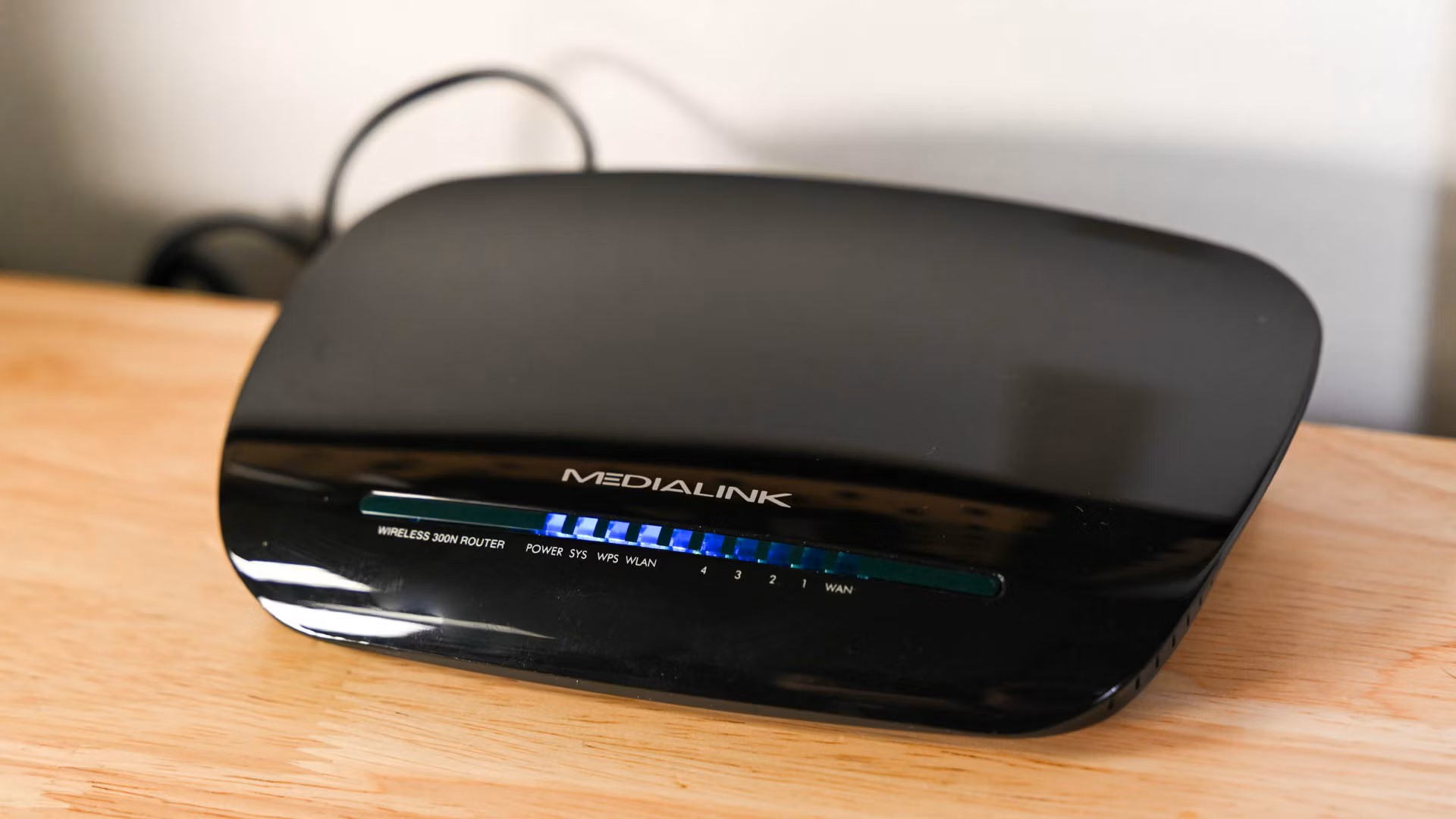




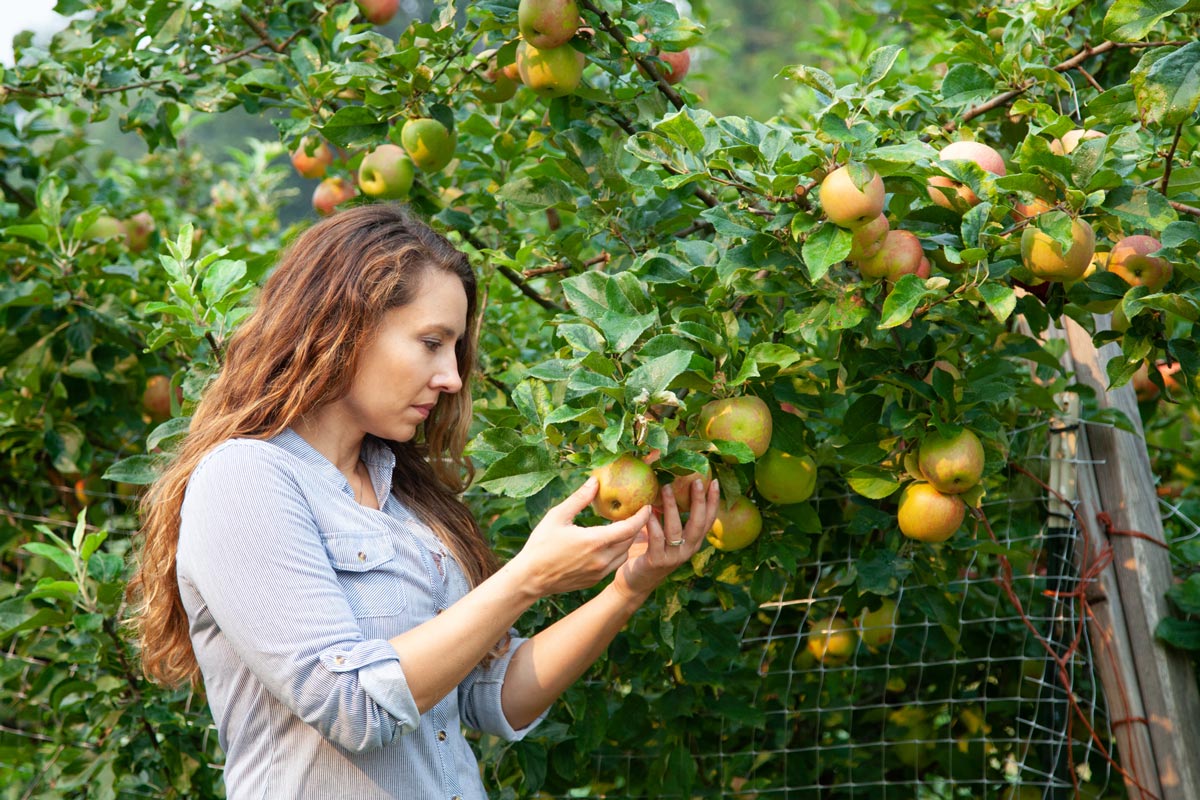

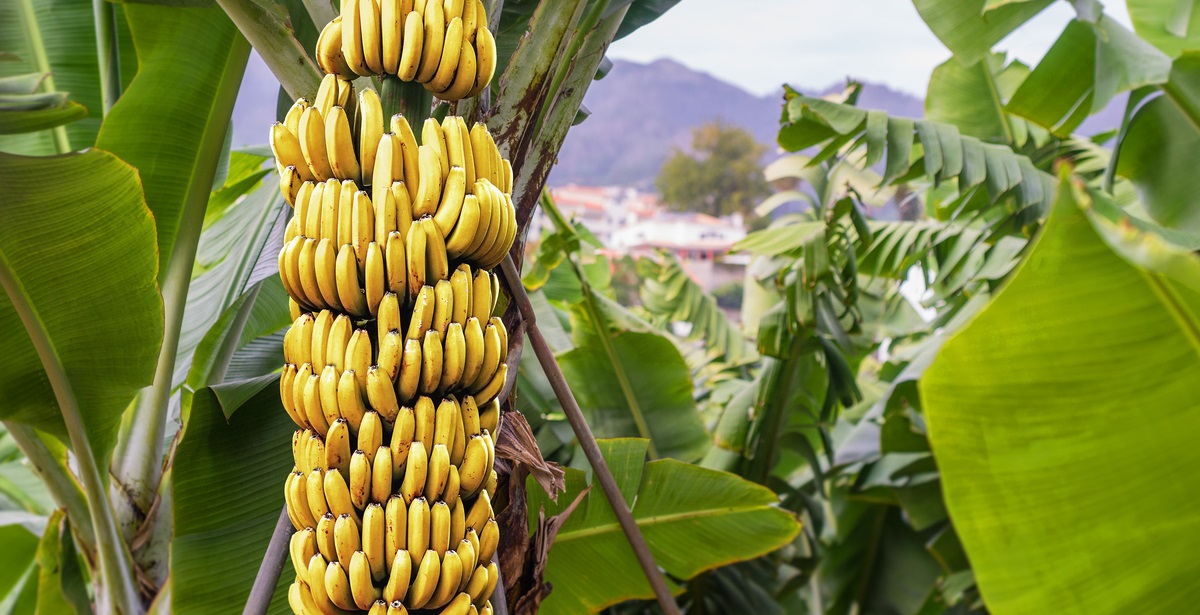
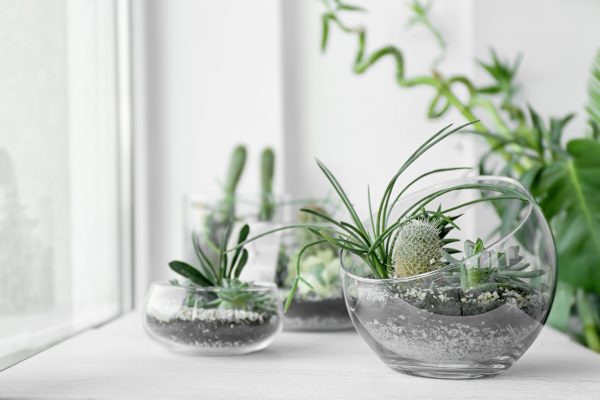



0 thoughts on “What Happens If You Plant Bananas In Your Garden”